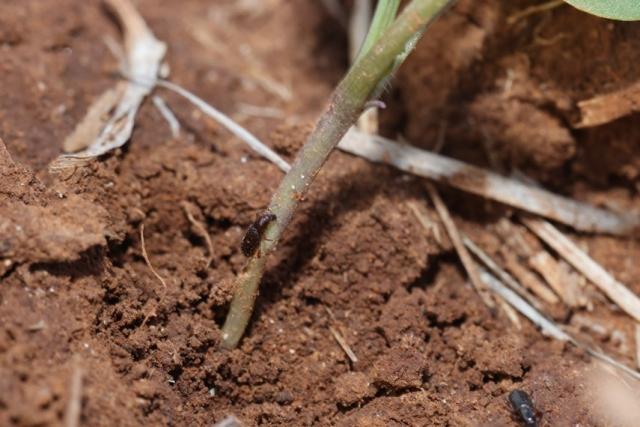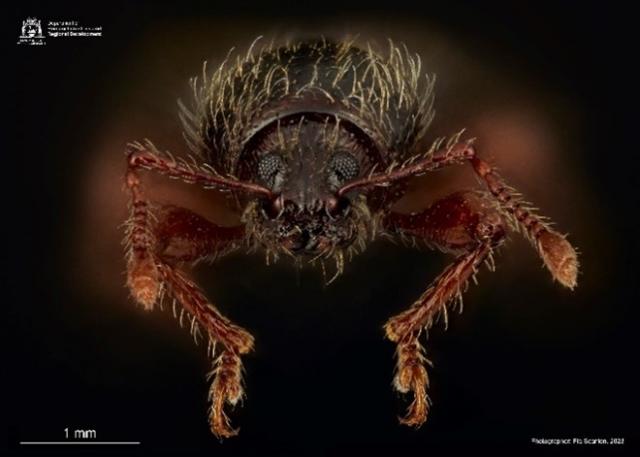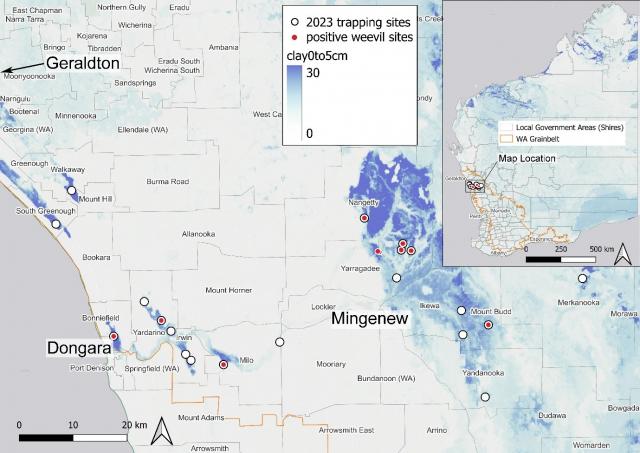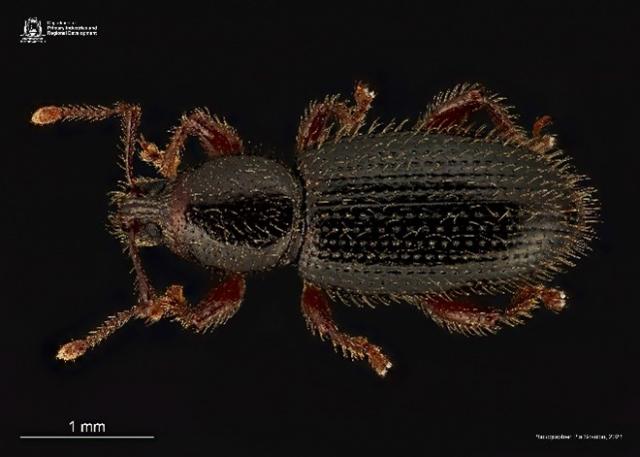The elusive Dongara weevil damaging canola crops in WA’s Mid West

At a glance
- Recently described as a new pest weevil species of unknown origin, the ‘Dongara weevil’ has been named Otiorhymirus dongara and represents a new genus of broad-nosed weevil.
- The tiny flightless weevil chews on newly emerged canola seedlings and appears to have a high tolerance for insecticides.
- Dongara weevils were detected at eight out of twenty sites in the Dongara/Mingenew region during 2023 surveys.
- High clay content soils appear to be more favourable than sandy soils.
- Pitfall trapping has shown that adult weevils are present and active throughout the season regardless of the crop.
A new weevil of unknown origin, found in the Dongara and Mingenew area, has been named Otiorhymirus dongara and represents a new genus of broad-nosed weevil in the Curculionidae (weevil) family (Figure 1). The new weevil, dubbed the ‘Dongara weevil’, has been causing extensive crop damage to some isolated canola crops in the Dongara and Mingenew areas for over 10 years. Until recently, the weevil was scientifically unidentified, and little was known about this pest.

A collaborative project between the Department of Primary Industries and Regional Development (DPIRD), Murdoch University and Mingenew-Irwin Group (MIG), and with investment from the Grains Research and Development Corporation (GRDC), is investigating the weevil species to gain better understanding of the pest’s distribution, hosts, and environmental preferences to develop management strategies for canola growers in the Mid-West region.
As part of the project, a taxonomic description of the Dongara weevil was prepared by DPIRD entomologist Andras Szito from adult specimens collected between 2013 and 2023. Molecular sequencing was initially conducted by DPIRD Research Scientist Ben Congdon, and subsequently carried out by Dr Aniruddha Agnihotri and Dr Wei Xu at Murdoch University. This confirmed the weevil as a new species. At this point, the origin of the weevil is unknown. It’s possible that the pest weevil may represent a species that is exotic to Australia and not known as a pest in its place of origin, or an Australian native species with unusual features that has suddenly switched from its normal host plants to feed on cultivated crops.
The Dongara weevil distinguishes itself from other prevalent canola damaging weevils, such as the desiantha weevil, by its smaller size and darker colour. However, they are similar in that they are active at night and shelter under clods or in deep cracks within the soil during the day.
DPIRD researchers, along with their MIG collaborators, have been conducting a series of surveys within a 50km radius of known occurrences of the weevil using pitfall traps and opportunistic sampling in paddocks. The survey results found the weevils trapped at 3 sites in the Dongara/Irwin region and 5 sites in the Mingenew region throughout the 2023 growing season (Figure 3). One canola crop east of Mingenew experienced in excess of 90% seedling loss attributed to weevils even after post-emergent sprays of bifenthrin and alphacypermethrin were applied.
Soil at all positive sites had a high percentage of clay ranging from 36.4–53.8% and were classified as either self-mulching cracking clay, calcareous loamy earth, or grey non-cracking clay according to soil groups of WA.

Further surveillance is planned for 2024 to further our understanding of this new species and its habits. This will provide greater insight into which growers are likely to be affected and which crop types are vulnerable.
For more information on the Dongara weevil refer to PestFacts WA newsletters Issue 8, 30 June 2023 or Issue 21, 10 November 2023.

